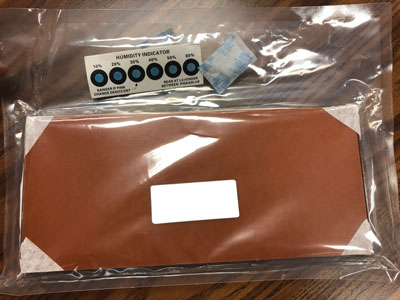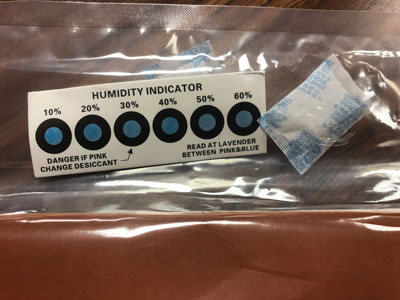Why ‘Born on Dating’ is Not a Reliable Means for PCB Shelf Life

Flex circuit solderability and life expectancy are influenced by handling and finishes.
What is the shelf life of a flex circuit if it stays in its original sealed packaging? And what is the life expectancy of a flexible circuit?
I assume the first question refers to long-term solderability and the second to the overall functionality of the flex circuit once installed in the final application.
As far as long-term functionality goes, flexible circuits in a static application really don’t have a post-installation “best if used by” date. There are flexible circuits over 25 years old still functioning without issue in military and avionics systems. Flexible circuits have also been used for decades in satellite applications due to their very low mass and high connection density. Considering the cost of a service call to a satellite, only the most reliable interconnects are used in these applications. That flexible circuits are still in use after all these years is a testament to their long-term reliability. The only exceptions to overall life expectancy are flexible circuits operating in very harsh environments, such as continuous temperatures above 275°F, strong acid or caustic exposure, abrasion, etc.
In short, flexible circuits installed in a protected, moderate environment will typically outlive the device in which they are installed. Note again that everything so far refers to a static application. If the application is dynamic, all bets are off. So many variables can affect the dynamic performance of a flex circuit, it impossible to cover them all, at least not in a one-page column. My advice is to refer to the general guidelines in IPC-2223, Sectional Design Standard for Flexible Printed Boards, and then discuss the application with the flexible circuit supplier. They should be able to evaluate the application and offer a good estimate of longevity. This will be stated as a function of the number of flex cycles, rather than time.
Regarding life expectancy, many things affect flex circuit solderability after an extended time on the shelf. The first issue is moisture content and absorption. Do not assume the supplier did a complete preconditioning bake to remove moisture before the parts were bagged and sealed. While a sealed bag should keep parts from absorbing additional moisture, it will not remove existing moisture. The sealed bag will also trap any moisture carried by the circuit when it was packed. It is best to assume parts were not baked immediately prior to shipment and contain some amount of moisture. If a flex with even a moderate amount of moisture content is processed through a reflow oven, the results will not be pretty. When moisture-laden flex is rapidly heated in a reflow oven, the moisture will rapidly expand and can cause severe blistering and delamination. It is always best to do a preconditioning bake at the assembly facility immediately prior to SMT. Even if the parts are already reasonably dry, another baking step will not hurt anything.
Another step to potentially increase solderable shelf life is to require your supplier to include a desiccant pack and a humidity indicator card (HIC) inside the sealed bag (FIGURES 1 and 2). This will help ensure parts stay dry until the bag is opened. If you do this, also make sure your receiving department does not tear open sealed bags as they arrive and toss them on the shelf unsealed. If your receiving department does need to open the sealed bags for incoming inspection, they will need to reseal them (with the desiccant and indicator included) before they are put in storage.

Figure 1. Including a desiccant pack and humidity indicator card (HIC) inside the sealed bag will help keep flexible circuits dry when they are on the shelf.

Figure 2. Close-up of the HIC.
The other issue affecting long-term solderability is the final finish. Far and away the most widely used finish in the PCB industry today is ENIG (electroless nickel immersion gold). Other lesser-used finishes are ENEPIG (electroless nickel electroless palladium immersion gold), HASL (hot air solder level), OSP (organic solderability preservative), immersion tin, and silver. Many variables impact the total solderable shelf life of these finishes. For instance, gold thickness and prepackaging contamination of the gold by skin oil or other residue can affect the shelf life of ENIG- or ENEPIG-finished PCBs. Very thin solder coating from HASL can result in reduced solderable shelf life of solder finish. In a nutshell, if the circuits are in sealed bags, you are safe to assume they will remain solderable for two to three months for silver, tin and OSP finishes, and six to nine months for HASL, ENIG and ENEPIG finishes. These estimates are conservative but safe. In practice, the latter three finishes should be good for well over a year, but again, many variables affect this. If long-term solderability is a concern, it is advisable to discuss this with your supplier, so they can take the necessary precautions to ensure maximum shelf life.
is senior application engineer at Flexible Circuit Technologies (flexiblecircuit.com); mark.finstad@flexiblecircuit.com. He and co-“Flexpert” (nick.koop@ttmtech.com) welcome your suggestions.




